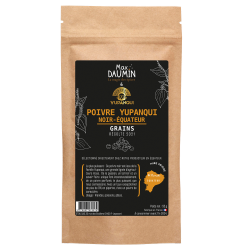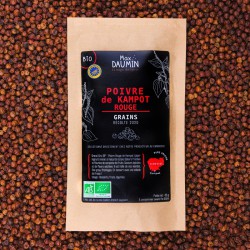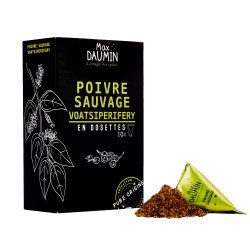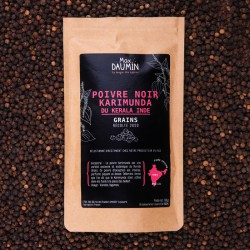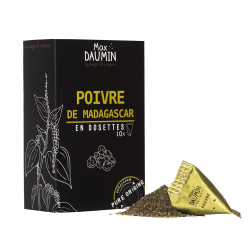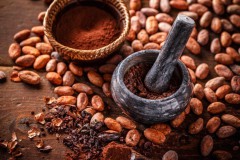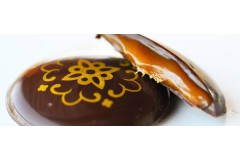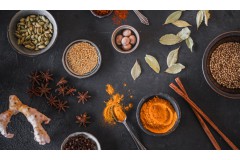antiquity:
The archaeological evidence of pepper dates back at least to 2000 years BC. We know that pepper was exported during this period, but by what means and as it is still a mystery. Indeed traces of an old probable trade in India pepper in Egypt have been discovered the presence of pepper grains both in the nostrils and in the belly of Ramses le Grand (1303-1213 BC) (Bulletins and Memoirs of the Paris Anthropology Society, Radiochromodensitographic Study on Ramses conducted by Lichtenberg and Thuilliez in 1981)
From the 1940s after J.-C., the Romans developed a flourishing trade in spices and in particular peppers. Starting from the southwest coast of India by enjoying the winds of the monsoon, they imported cinnamon, incense oil and pepper. Alexandria was at the time the shopping square of this business.
Although the book was written a few centuries after his death, the collection of Apicius, famous gastronoma from the beginning of the 1st century, describes a multitude of Roman recipes containing spices including pepper.

Pisane card , one of the first cards dating from the 13th century.
We also see the high cost of pepper in the few writings that have reached us. Indeed, in September 408, Alaric 1er, king of the Visigoths and his army besiege Rome. The exhausted and hungry Romans ended up going by paying a ransom. The price to pay was 2,500 kg of gold, 15,000 kg of silver, 4,000 silk dresses, 3,000 skins and 1,500 kg of pepper . ( https://fr.wikipedia.org/wiki/alaric_ier ). The pepper was already compared to a precious metal!
In the Middle Ages:
After the fall of the Roman Empire and from the 7th century, the Arabs organized themselves in order to take over the spice trade. In order to maintain their monopoly they invented a whole myth (source: Spices and late-medieval European Ideas of Scarcity and Value Paul Freedman) according to which pepper was cultivated in India in infested valleys of snakes. It was then necessary to burn the trees to make the snakes disappear. The fire then gave the black color of the skin of the pepper grains they said.
This is to say the importance at this time of this trade where we completely protected our sources and by any means!
Pepper trade becomes more and more flourishing from the 10th century to spread throughout Europe. With this increase in demand, prices flew away and taxes, rents or dots were sometimes paid in pepper. For example, the King of England Ethelred II (978-1016) required 10 pounds of pepper from German spice traders before letting them do business in London (Source: Spice crop e.a weiss).
With the increase in the bourgeoisie in the Middle Ages, having pepper was part of the "standing" of the time. Thus this pressure significantly increased demand and therefore further increased prices. This forced the strong places to develop spice trade including pepper. In the 14th century, Genoese massively imported pepper from Alexandria. Exactly between 1367 and 1371 more than 40% in value of Genoa imports were pepper (Source: Spice and Late-Medieval European Ideas of Scarcity and Value Paul Freedman).
The Venetians also started to trade with pepper. They increased the sale price of pepper by more than 40% during the 15th century. (Spices and late-medieval European Ideas of Scarcity and Value Paul Freedman)
At that time the sources of peppers came mainly from Constantinople, Syria, Cyprus and Alexandria.
Under the impetus of the Portuguese king Jean Premier, Henri the navigator, his son, was the first to push the development of trade and maritime adventure. Subsequently, Vasco de Gama went to seek a direct maritime route in India, discovered in 1497, in order to short-circuit the monopoly of the Arabs. His goal was to find "Christians and spices". The evangelization of peoples served as a pretext in order to master this flourishing trade.
From the 15th century the Portuguese dominated the pepper trade. It is said that between 1500 and 1600 Portugal imported more than 2000 tonnes of pepper per year! (Source: Spice crop e.a weiss)

Portuguese Mappemonde, Atlas Miller XVIth century.
The Renaissance:
Portugal then quickly lost control of its imports because their military and political authority were underdeveloped on these colonized lands. Thus the Dutch from the 16th century became the main actor of the import and trade of spices including pepper. During Holland's "Golden Age", they multiplied the counters through their famous Dutch Eastern India (Voc) company in India, Indonesia, Sri Lanka and Java.
The pepper course was then still very high to reach 20 to 30 g of money for 1 kg of pepper.
When the British Empire was finally imposed in almost all the tropics in the 18th and 18th century, it finally took control of the spice trade with in particular the company: the British East India Company, supported by its military forces dominant.
Modern times:
With the fall of the Empire of England, with the industrial revolution which facilitated access to communication routes (sea and terrestrial roads), with the development of cultures of 'Spices and pepper all over the world, the course of pepper and spices lowered. The pepper and spices thus became accessible to the greatest number.
In memory of the high cost of pepper, spices, we inherited some expressions such as "dear as pepper" or "Pay in spices" which gave "pay in cash" .
Today the quest for pepper remains massive with more than 2,500,000 tonnes produced per year in the world. There is even a pepper scholarship in Cochin (India). Among this production, there are small productions of exceptional wines which are significantly innate mass pepper.
 hands of Gheevargeese, our pepper producer at Kerala (India)
hands of Gheevargeese, our pepper producer at Kerala (India)
Max Daumin

